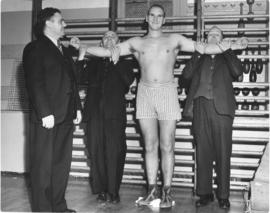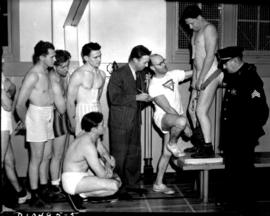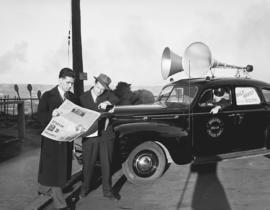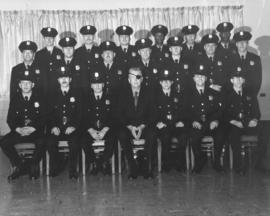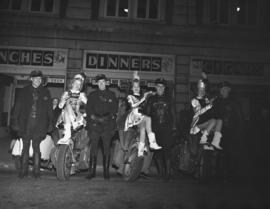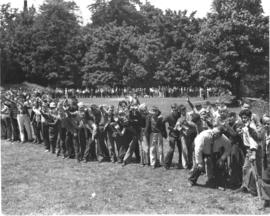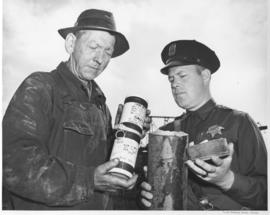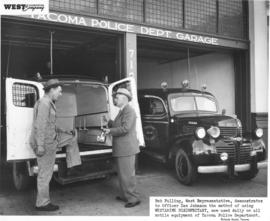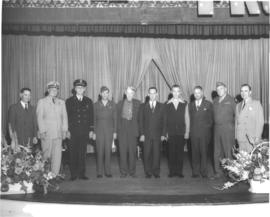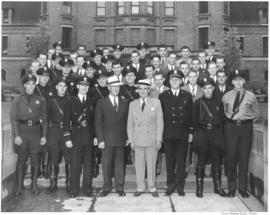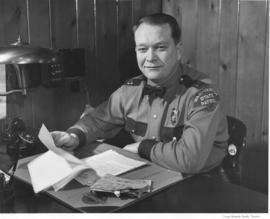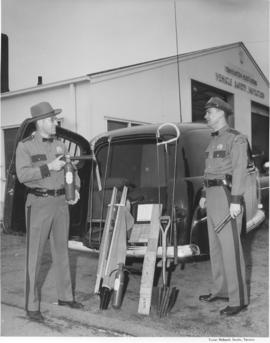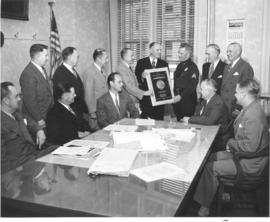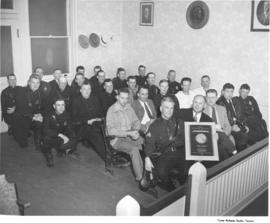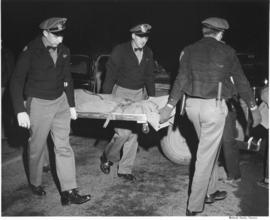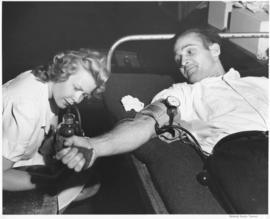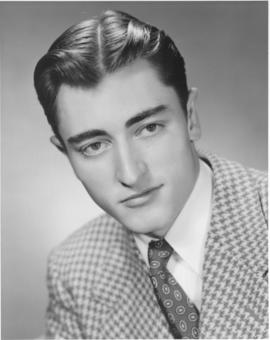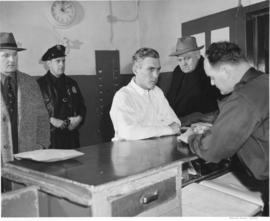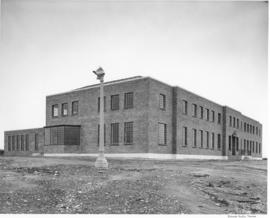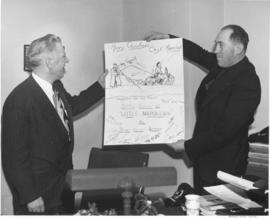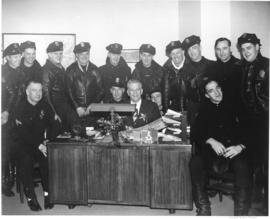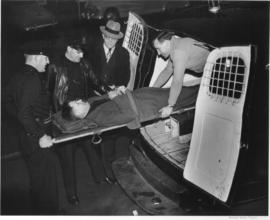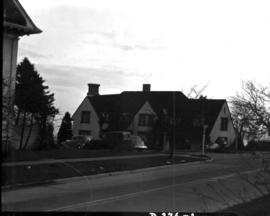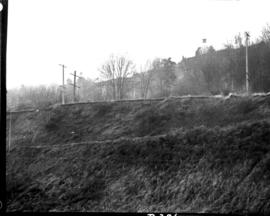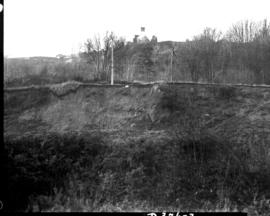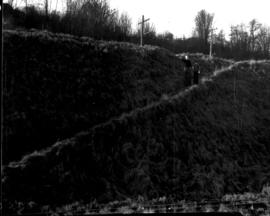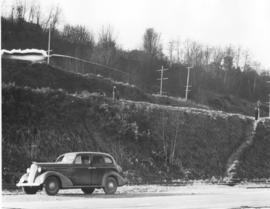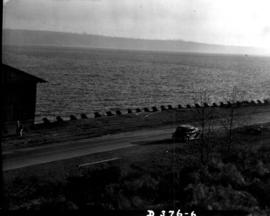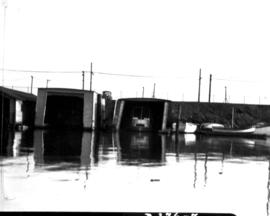View of Dr. William Mattson residence, Hill and Mock, Architects, Nelson J. Morrison, designer, circa 1925. Photograph ordered by the Seattle Star. On December 27, 1936, on a night characterized by heavy darkness and fitful showers, a masked intruder forced his way into a rear entrance of the Mattson residence and abducted ten year old Charles. Charles, his brother William, 16, sister Muriel, 14, and family friend Virginia Chatfield, 14, of Seattle had been in the front room watching motorists drive up to view the enormous evergreens lit up like Christmas trees on the Mattson front lawn. The intruder carried 70 pound Charles down a steep cliff behind the home that led to Ruston Way and the waterfront. He left behind a ransom note demanding $28,000 dollars. A previous kidnapping attempt had been made in November of 1936 only two blocks away; as a prowler placed a ladder to a second floor window in an attempt to abduct the 6 year old son of Mr. and Mrs. George Franklin. The Franklins had purchased "Haddaway Hall, " the home of John Philip Weyerhaeuser Sr. at 4301 No. Stevens. The attempt was foiled when Mrs. Franklin was awakened by the beam of a flashlight. No fewer than 12 high profile kidnappings had occurred nationally since the 1934 kidnapping of the Lindbergh baby. Like in the Lindbergh case, Charles Mattson was found murdered. His murder was never solved. (T.Times 12/28/1936- 1/25/1937)
Kidnappings--Tacoma--1930-1940; Houses--Tacoma--1930-1940; Mattson, William--Homes & haunts; Mattson, Charles--Homes & haunts; Mattson, Charles--Kidnappings;
